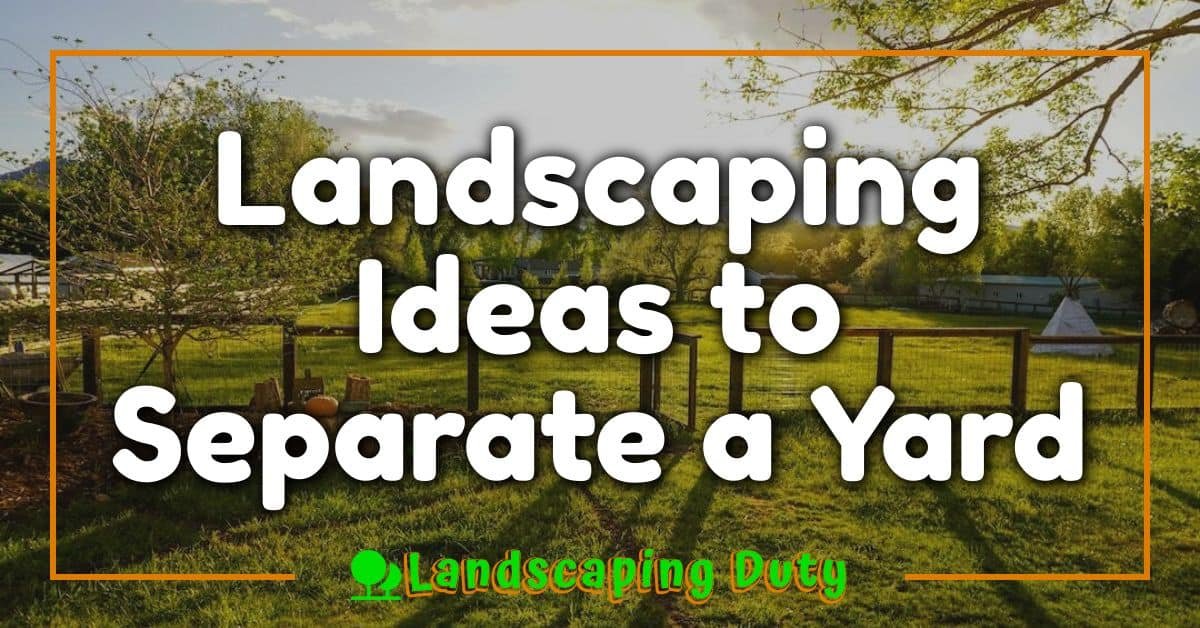Stepping into the world of historic homes feels like traveling back in time, doesn’t it? These homes tell stories of a bygone era, and their charm lies in every intricate detail. But what often gets overlooked is the landscape surrounding them. A thoughtfully designed landscape can elevate the beauty of a historic home, creating a seamless connection between the past and the present.

I’ve always believed that the right landscape design doesn’t just complement a historic home—it enhances its character. From period-appropriate plant choices to pathways that echo traditional styles, every detail matters. Whether you’re restoring an old garden or starting fresh, understanding the home’s history and the era it represents is key to crafting a timeless outdoor space.
Understanding Landscape Design for Historic Homes
Landscape design for historic homes involves aligning outdoor spaces with the home’s historical era and architectural style. Every element, from plant selection to hardscape materials, contributes to preserving the property’s authenticity and charm.
Historical research ensures the design reflects the period accurately. I examine old photographs, archives, and plant records to determine what would have been present during the home’s prime. This attention to detail highlights the connection between the landscape and the historic architecture.
Material selection supports the historical narrative. For example, brick, stone, and gravel pathways often align with pre-20th-century homes, while wrought iron fencing and wooden arbors can complement Victorian properties. Replicating these traditional elements enhances the exterior’s visual coherence.
Plantings create a bridge between the past and present. I incorporate species that were popular in the era, such as heirloom roses for 19th-century homes or native plants for Colonial properties. Modern adaptations, like disease-resistant cultivars of traditional plants, maintain historical aesthetics while offering durability.
Proportional balance respects the scale of historic homes. Large estates may feature expansive lawns and symmetrical gardens, while smaller properties might include cottage-style borders or modest kitchen gardens. Maintaining period-appropriate layouts ensures visual harmony.
Incorporating these principles fosters a historical ambiance, ensuring the property both respects its origins and remains functional for modern use.
Key Elements of Historic Landscape Design
Historic landscape design enhances the character of historic homes by reflecting their architectural era and cultural context. Careful integration of authenticity and practicality plays a pivotal role in achieving a cohesive design.
Importance of Authenticity
Authenticity preserves the historical integrity of outdoor spaces by using period-appropriate details. I rely on historical records, photographs, and botanical archives to select plants and materials that reflect the home’s original era. For example, heirloom plants like boxwood and lavender fit Georgian or Victorian landscapes, while native prairie grasses suit Craftsman-style gardens.
Preserving existing elements, such as original pathways or garden walls, strengthens historical accuracy. Restoration involves repairing features rather than replacing them with modern materials, ensuring the design remains tied to the home’s roots. Authenticity creates continuity between the architecture and surrounding outdoor areas.
Balancing Aesthetics and Functionality
Balance ensures the landscape is visually appealing and practical for contemporary use. I incorporate traditional layouts, like symmetrical designs for colonial homes or asymmetrical arrangements for Arts and Crafts styles, to mirror the home’s aesthetic. Using formal garden beds bordered by gravel paths for Georgian homes is one example of matching style with function.
Modern amenities, such as lighting and seating, are discreetly included to preserve the historical feel. I might use wrought-iron benches or vintage-inspired fixtures to merge functionality with the period-appropriate theme. Durable materials like stone or brick extend usability without altering the design’s historical essence, making the space both timeless and practical.
Integrating Modern and Historic Design Principles
Combining modern and historic design elements results in landscapes that respect the past while meeting present-day needs. By blending traditional aesthetics with contemporary functionality, outdoor spaces feel timeless and relevant.
Choosing Plants and Materials
I select plants and materials that complement both the historical character of the home and modern sustainability standards. Heirloom species, like boxwoods or lilacs, establish a period-appropriate atmosphere, while native or drought-tolerant plants reduce long-term maintenance. For materials, I prioritize those aligning with the home’s era, such as reclaimed brick or natural stone, but incorporate modern innovations like permeable paving to address environmental considerations.
Preserving Historical Features
I ensure existing historical elements remain intact when integrating new designs. Structures like garden walls, wrought-iron fences, or original fountains become focal points, grounding the landscape in its historical context. When features need restoration, I use traditional methods and materials to maintain authenticity. Additionally, I respect the spatial proportions and alignments of original layouts, making updates that honor the site’s historical integrity while seamlessly accommodating contemporary outdoor amenities, such as lighting or seating areas.
Tips for Maintaining the Landscape Over Time
Maintaining a historic home’s landscape requires consistent effort and informed decisions to balance authenticity and functionality. Proper care preserves the historical integrity while ensuring the outdoor space remains beautiful and usable.
Seasonal Care and Upkeep
Seasonal maintenance sustains the landscape’s health and historical accuracy. I prioritize tasks like pruning heirloom shrubs and trees in late winter to encourage proper growth and maintain their historic character. Seasonal planting with native or traditional plants ensures alignment with the home’s historical period and climate conditions. For example, replanting Victorian flower beds with heirloom bulbs like tulips or daffodils revitalizes the garden while preserving its historical relevance.
Lawn and pathway care is essential to maintain the historical look. I remove encroaching weeds from gravel pathways or moss from stone walkways during spring and early fall to maintain their original appearance. Irrigation needs vary by region and plant type; watering schedules for native and drought-tolerant plants help prevent overwatering while conserving resources.
« 25 Front Yard Landscaping Ideas to Boost Curb Appeal on Any Budget Residential Landscaping Ideas for Every Home: Transform Your Outdoor Space with Style »
Working with Preservation Experts
Collaborating with preservation experts ensures historical accuracy in maintaining or restoring landscapes. I consult architectural historians or landscape preservationists familiar with period-specific designs when planning changes or repairs. These professionals guide me in sourcing historically appropriate materials, such as antique bricks or reclaimed timber, for repair work.
During the restoration of original features like courtyards or fountains, I rely on experts to employ traditional techniques that adhere to the property’s historical timeline. For example, lime mortar may be used for restoring stone walls rather than modern concrete to maintain authenticity and durability. Engaging with experts prevents mistakes that could diminish the landscape’s historical and aesthetic value.
Examples of Successful Historic Home Landscapes
- Monticello’s Restored Gardens
The gardens at Monticello, Thomas Jefferson’s Virginia estate, showcase an exemplary restoration. Using Jefferson’s detailed records, the team revived heirloom vegetables, ornamental flower beds, and a fruit orchard. These elements blend historical accuracy with modern preservation techniques.
- Vizcaya Museum and Gardens
Vizcaya in Miami, Florida, integrates Italian Renaissance-inspired gardens with native tropical plants. Restored fountains, geometric hedges, and traditional stonework mirror the estate’s historic grandeur while embracing Miami’s climate.
- The Mount’s Formal Landscape
Edith Wharton’s estate in Lenox, Massachusetts, reflects her principles of design harmony. The restored terraces, French and Italian-style gardens, and tree-lined pathways respect the property’s original 1902 plans, connecting the outdoor spaces with the home’s architectural style.
- Middleton Place’s Symmetrical Design
Located in South Carolina, Middleton Place maintains its historic 18th-century design, including symmetrical gardens and water features. Native plant species and heirloom roses enhance the authenticity, creating a landscape true to its original form.
- Longwood Gardens in Pennsylvania
This estate marries its mid-20th-century origins with modern enhancements. Water gardens, restored fountains, and native plants maintain historical integrity while integrating eco-friendly practices to support longevity.
- Filoli Historic House and Garden
Filoli in California preserves an English Renaissance-style landscape paired with native plants for sustainability. Walled gardens, manicured lawns, and heirloom plantings reflect the early 20th-century design while adapting to California’s climate needs.
Conclusion
Designing landscapes for historic homes is a rewarding journey that requires a thoughtful blend of respect for the past and adaptability for modern living. By embracing historical research, period-appropriate materials, and sustainable practices, these outdoor spaces can truly reflect the character and legacy of the property.
Every detail, from heirloom plants to preserved pathways, plays a role in creating a timeless environment that honors the home’s origins. With careful planning, collaboration with experts, and a commitment to authenticity, it’s possible to craft landscapes that celebrate history while remaining functional and beautiful for generations to come.
















